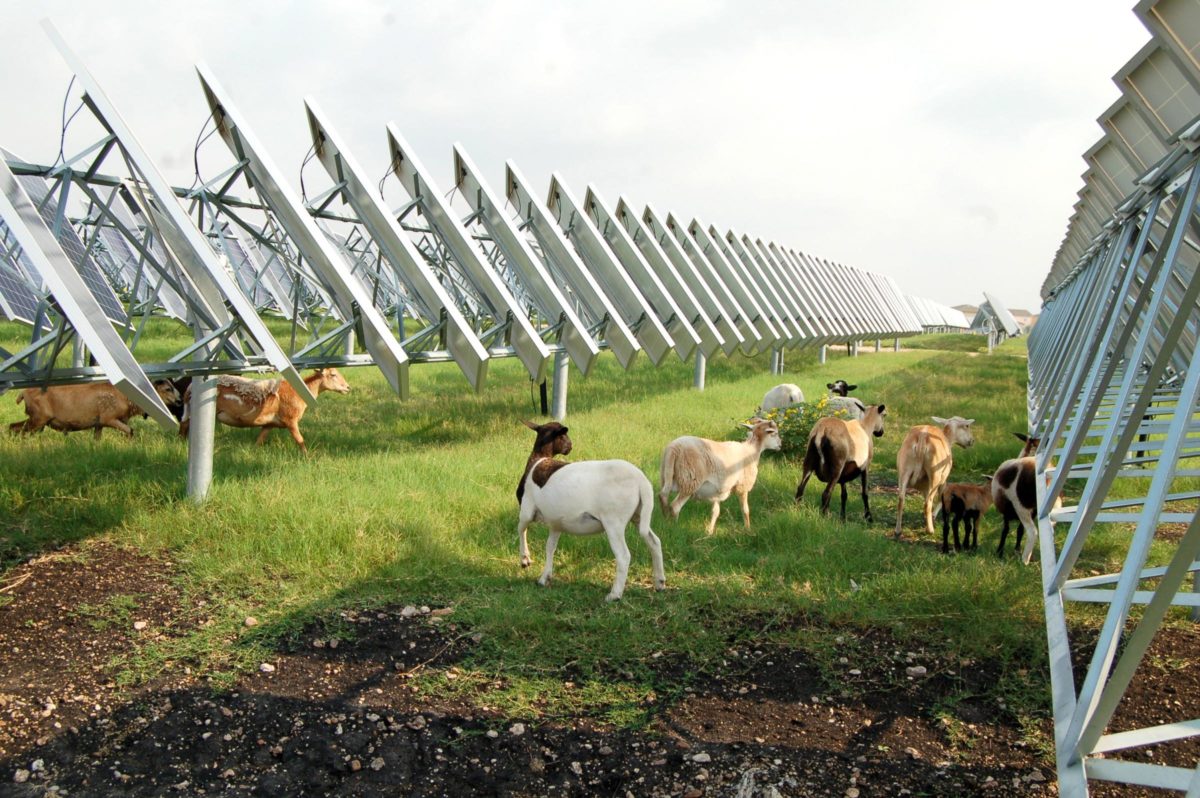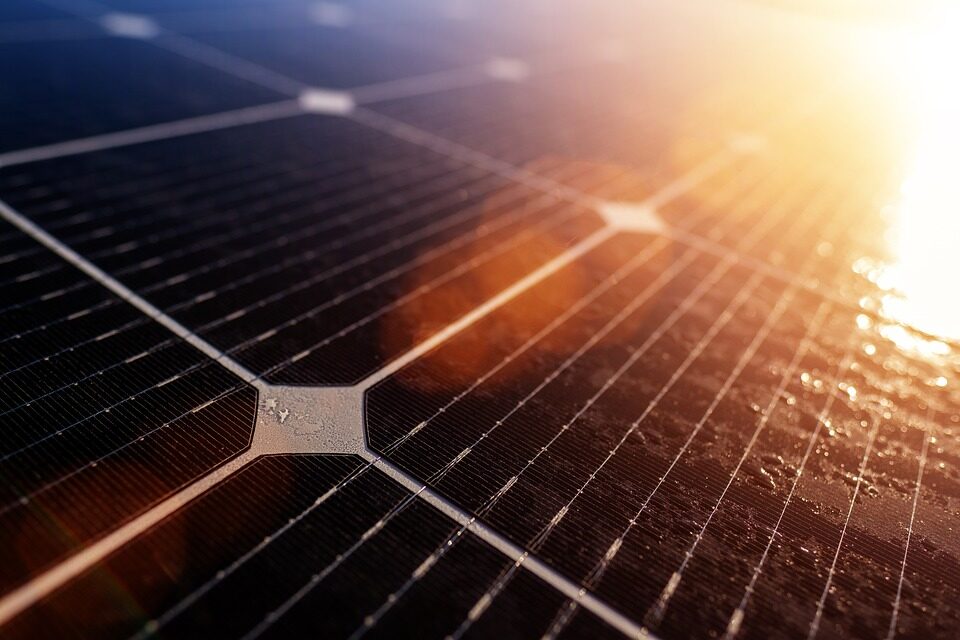The most well-documented advantage to locating solar arrays on farmland is the financial relief the land-lease agreements provide the farmers.
“A lot of times, these leases are saving farms,” said Brad Mitchell, deputy executive director and policy director for the Massachusetts Farm Bureau. This is especially true for growers of the state’s signature crop – cranberries.
While Massachusetts and New York have provided a glimpse of what’s possible for the future of community solar coexisting with farms, the consensus among the industry experts present at Solar & Storage Northeast in Boston is that we’ve just begun to see what’s possible.
Right now, cranberry growers hold a unique position in the energy revolution, one that can be used to highlight the overlooked long-term benefits of community solar. Cranberries, as a crop, are in a position where the production cost of a harvest outweighs the value of the berries harvested. Because of this, it’s advantageous for growers to downscale their bogs and convert the land into a solar farm. Not only do the land leases cover production cost losses, but the land is not lost to future development.
“Solar is the only [type of ] development, where the land used can be re-farmed later,” continued Mitchell, a fact the presenters agreed was the under-appreciated value of solar development. In the the case of a crop like cranberries, once the lease is up, typically 20 to 30 years, farmers have full freedom to go back to growing, if the production cost/benefit has readjusted to a positive position. If not, they can just re-lease the land, solidifying an income source and the financial strength of their farm for years to come.
This also combats one of the most prevalent arguments against development, that no matter what goes in, prime farmland is being lost. Mitchell sees this as a huge opportunity to increase support for community solar, by framing solar development as a form of farmland conservation and, in a larger scale, land conservation, an opinion held in consensus among the group of presenters.
In Massachusetts, land conservation arguments alone won’t make community solar successful.
More than just leases
“What we don’t talk about enough are the other services that these [solar] farms provide,” said Hannah Muller, Director of Public Policy for Clearway Energy Group. Muller went on to highlight the other ecosystem services that community solar farms provide, including grassland habitation, pollinator housing and and water retention. She went on to say that if compensation was available at the state or municipal level for the inclusion of these services within an array, it could spur projects that may otherwise not have been financially optimal.
The presenters came to a consensus on the necessity of fair compensation for generation, determined by industry calculations and available via community solar pilot programs developed at the state level. Another financial easement the group was in agreement upon was the reduction of decommissioning costs, namely decommissioning bonds.
This was among the chief concerns of Dan Spitzer, an attorney with Hodgson Ross who said:
“There’s a lot more pizza parlors that have gone out of business than solar farms, but they don’t need to supply a decommissioning bond.”
This content is protected by copyright and may not be reused. If you want to cooperate with us and would like to reuse some of our content, please contact: editors@pv-magazine.com.









It would be great to put pv panels on pergolas in beach parking lots. It would be nice not to have my car cooking at the end of the day. Plus, that would provide income to state in addition to parking fees. (I am not naive enough to believe that they would reduce parking fees).
Agriculture must go with harvesting solar energy. Agriculture should not directly receive solar from the sun, but let solar rooftops directly receive solar from the sun, because solar panels better absorb solar than plant leaves . This is the new concept of AGRIENERGY, in which solar energy is harnessed directly only by rooftop solar panels, then solar panels power LED as secondary light sources for plants under these rooftop solar panels. All plants are in artificial boxes, but not in natural lands, for effectively using waters and fertilizers. Agrienergy farms sell electricity to grids , which can send electricity to network of hydrogen production factories when there is surpassed energy. So networks of hydrogen production factories are very important for agrienergy model. Scientists and experts talk regularly about roles of hydrogen production factories.
America should convert all its traditional farms to agrienergy farms, and build networks of hydrogen production factories. Networks of hydrogen production factories will be crucial fundament for stimulating various private small renewable energy projects, because these various private small renewable energy projects will no longer need battery equipments, they just harness energy and directly sell to grids at any times. By this way, America can become world big hydrogen exporter to change the way of powering the world. It exactly can again take America to role of leading the world, instead of the current screams about boosting fossil fuels of Mr Trump.
There is a cattle feedlot off of the Hwy 78/ Hwy 115 intersection in Imperial county, CA. For about 20 years now, the cattle pens have had tracking solar PV panels over the pens to shade the cattle in often 100 to 110 degree Fahrenheit summer days. It’s interesting to see how the cattle actually move during the day to stay in the shade of the solar PV arrays. Shade for the cattle, electricity for the operation and less overhead spent on powering the operation on a monthly basis.
It is also in the Imperial county, that many farmers have “fallowed” farm land and leased it to solar PV developers to install solar PV farms on the land. The individual farm’s, yearly “water rights” are signed over to San Diego and MWD in California to use as domestic water after being treated to a potable standard. It would be particularly difficult to put these lands back in production once the contracts have been signed.
There is a lot of livestock across America…. cows, pigs, sheep, chicken, what else?? All of them under hot weather in buildings.. They demand air conditioning … Livestock farmers are too cheap!
Growing crops under solar arrays can be possible except tall corn for example.. I dont know if we can put solar over lettuce , cabbage, celery and low leafy crops that lose too much water to evaporation. The solar panels can be spaced wider to allow some sunlight get through to keep them growing through photosynthesis but not necessarily full day of sun. Have anybody ever experimented with that? I know it won’t work with tomatoes, for example. tomatoes demand full day of sunlight.
Immigrant workers can appreciate some shade during summertime harvesting.
Solar arrays can be outiftted with sprayers underneath to control pests..Can they ?